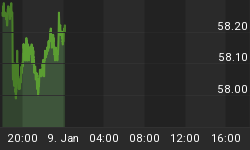Most investors are looking for the stock or investment that will show a large increase in value. That is perfectly reasonable, as long as those attempts are viewed in context of an investor's entire portfolio. A reasonable portion, such as 10% of a portfolio, can usually be regarded as 'risk' capital.
The essence of making money (profit) is not losing money. As corny as that sounds, that is the secret of making your portfolio grow. A simple bit of math illustrates the point. Start with $1,000. Assume that most stocks rise 4% this year. One gamble with 5% of your portfolio is lost. Summary $1,000 + $40 - $50 = $990.
If you had not taken that risk, your portfolio would have been worth $1,040. Assume next year, similar returns of 4% are achieved, making the portfolio worth $1,081.60 at the end of next year.
But you only have $990 to invest at the end of this year after that one loss. That means that next year you need to earn 9.2% to get to $1,081.60. Each year that you don't catch up with more than double average returns on your portfolio, you fall further behind. In a few years, because the difference compounds to greater disparity each year, your portfolio is 20% and then 30% behind the average. The compounding effect, although not seemingly significant initially, makes a huge difference over a number of years.
Measure Risk Rather Than Reward
Where long term value investing is concerned, Benjamin Graham was the original Intelligent Investor. Graham, (1894-1976) contributed enormously to the subjects of Value Investing.
Benjamin Graham's mantra was "The essence of portfolio management is the management of risks not returns." Risk control is a careful aligning of interests combined with a balance between greed and fear. Above all it is the willingness to hold cash when opportunities are scarce and the odds are not tipped in favor of a particular investment.
There are Various Types of Risk
A recent article from the financial press reports that "shareholders of timber firm Sino-Forest Corp (FG)(PINK:SNOFF) will receive nothing under a proposed restructuring plan that would transfer remaining assets to creditors". This company, once with a share price $25 and a market cap of $6 billion as recently as one year ago, is now defunct as its former executives face fraud accusations.
Investing in jurisdictions that have different accounting standards, and different financial reporting standards, increases risk. It is really that simple. Sino Forest held supposedly enormous assets, all in China. Yet it was listed on North American stock exchanges. Investors beware!
As we have repeatedly commented, before investing in any security, one should look at the company and apply normal common sense. Investors should compose a list of positive and negative factors that are based on risk/reward. The list should be compiled before looking at any security and then every proposed investment should be subjected to the same standard list. In this age of internet information, anyone can look up any company that is publicly listed and examine that company.
Risk is Not All Bad
In a Capitalist society, taking risk is essential to have advancements. Taking risks means if the risk proves to have been a good one, the reward is accordingly large. There are numerous junior stocks that have wonderful assets and a real chance of achieving success. If you allocate part of a portfolio to these types of stocks, and if you ensure that they have strong assets, strong management, and the resources to obtain sufficient funding, then a small investment can produce very positive returns.
We believe that such stocks are a worthwhile investment, but doing due diligence rather than listening to tips is essential.
















